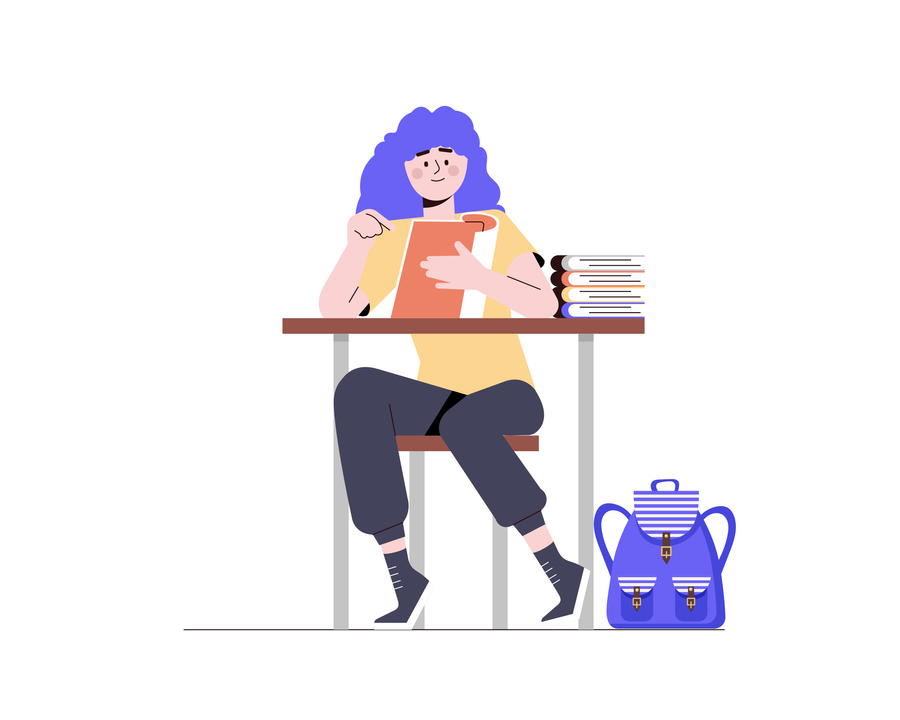Advocating for social needs at school
~ 4 min read

School is one of the most important settings for the development of your social relationships, but a place where a child with narcolepsy/idiopathic hypersomnia might struggle.
Did you know that patients with narcolepsy may struggle with memory and attention, compared to patients without narcolepsy? This can affect your enthusiasm to be at school and ability to focus your energy on making new friends and strengthening existing relationships. Read More
An Individualized Education Program (IEP) can provide support and services to help you thrive socially in school.
Every public and charter school in the United States will know what an IEP is because it is part of federal law! The IEP is more than just a legal document. It’s a roadmap that describes the style of teaching instruction, support, and service you might need to excel in school. Children are eligible for an IEP as soon as they turn 3 years old. Even if you do not require an IEP, having an open discussion with your school could be very beneficial.
What happens if you go to a private school?
You may be eligible for an Individual/Instructional Services Plan. This will require a discussion with your school directly.
There are common myths about what an IEP is. These include:
- A child on an IEP must be in a separate classroom.
Reality: The goal for these programs is to put children in the best possible environment to succeed. When it comes to fostering social relationships, this is often in the same classroom as other children who are not on an IEP.
- It is only for those with severe physical or intellectual disabilities.
Reality: There are 13 categories that someone can qualify for an IEP. Most receiving extra services do not have a severe disability.
- This will cause me to be labeled forever.
Reality: This is a natural concern. Keep in mind that getting the best help now does not mean that you will require help forever, and because you are getting the help you need now, you will hopefully not need similar services in the future. Avoiding the conversation might mean that you will need more complex services in the future to ensure you succeed in school.
How do I start the process of seeing if an IEP can help me develop socially and academically in school?
- Have your parents/guardians bring your concerns to the attention of your teacher(s). Narcolepsy and idiopathic hypersomnia are relatively rare disorders, meaning that they may not have even heard of these sleep disorders before! Help to educate them by providing them with handouts:
- What is narcolepsy disorder? Narcolepsy Network provides valuable information for helping educate those at school.
- What is idiopathic hypersomnia? Hypersomnia Foundation provides valuable information for helping educate those at school.
- An evaluation is typically needed before an IEP is developed for students, and decisions about whether your child qualifies will be made on a case-by-case basis. The evaluation could involve information submitted by your child’s teacher, a medical evaluation with your child’s sleep physician, and/or a neuropsychological or psychoeducational evaluation to identify your child’s strengths/weaknesses. While a narcolepsy or idiopathic hypersomnia diagnosis alone does not quality for an IEP, the impact of the sleep disorder on their well-being will play a major role in determine their eligibility.
What should I consider when requesting more help for meaningful social relationships at school?
Everybody’s needs are unique. Think about what would be helpful for you on your worst days at school. If you’re struggling for ideas, here are some to consider that may be helpful for you:
- A private nap space, where you don’t have to feel embarrassed if you feel the need to sleep.
- Audio recordings of classroom activities so that you can focus their attention on what’s happening around you, rather than stressing out over missing something the teacher said when you felt sleepy (or were napping).
- Sitting at the front, or the back of the class. At the front, students may feel more engaged with the teacher and stay awake better. At the back, students may find it helpful to be able to quietly stand up and walk around to keep themselves alert.
- Access to sensory stimuli to maintain wake. Examples include a standing desk, a bungee cord around the leg of a chair, fidget toys, and Velcro under the desk for you to run their fingers over it.
- Modified homework requirements.
"Something that I have found helpful is to have a signal with my teachers. Placing a water bottle on their table or something, that lets them know that they need to get up and move, go to their sleep space for a few minutes, or that they are going to put their head down for an intentional nap. This would let the teacher know what's going on without drawing attention to myself and the teacher wouldn't think I was doing something wrong. My teacher even sometimes asks me if I want to run an errand when they see the signal because that will give me an excuse to leave the room."
Consider this an opportunity for your classmates to learn more about sleep disorders. Perhaps your teacher could spend a science class explaining to students what narcolepsy or idiopathic hypersomnia is!